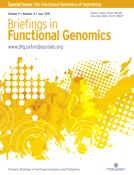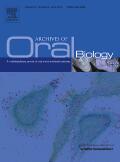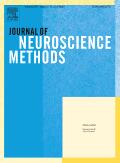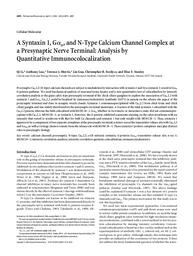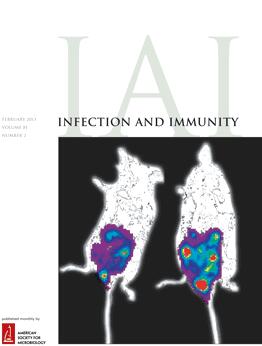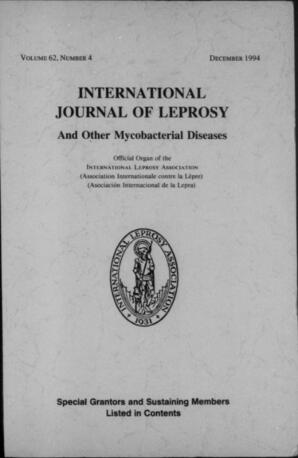Science and Technology
Related Works
Content type
Digital Document
Abstract
The development of gene targeting approaches has had a tremendous impact on the functional analysis of the mouse genome. A specific application of this technique has been the adaptation of the bacteriophage P1 Cre/loxP site-specific recombinase system which allows for the precise recombination between two loxP sites, resulting in deletion or inversion of the intervening sequences. Because of the efficiency of this system, it can be applied to conditional deletions of relatively short coding sequences or regulatory elements but also to more extensive chromosomal rearrangement strategies. Both mechanistic and functional studies of genomic imprinting have benefited from the development of the Cre/loxP technology. Since imprinted genes within large chromosomal regions are regulated by the action of cis-acting sequences known as imprinting centers, chromosomal engineering approaches are particularly well suited to the elucidation of long-range mechanisms controlling the imprinting of autosomal genes. Here we review the applications of the Cre/loxP technology to the study of genomic imprinting, highlight important insights gained from these studies and discuss future directions in the field. [ABSTRACT FROM AUTHOR]
Origin Information
Content type
Digital Document
Abstract
Type IIB fast fibres are typically demonstrated in human skeletal muscle by histochemical staining for the ATPase activity of myosin heavy-chain (MyHC) isoforms. However, the monoclonal antibody specific for the mammalian IIB isoform does not detect MyHC IIB protein in man and MyHC IIX RNA is found in histochemically identified IIB fibres, suggesting that the IIB protein isoform may not be present in man; if this is not so, jaw-closing muscles, which express a diversity of isoforms, are likely candidates for their presence. ATPase histochemistry, immunohistochemistry polyacrylamide gel electrophoresis and in situ hybridization, which included a MyHC IIB-specific mRNA riboprobe, were used to compare the composition and RNA expression of MyHC isoforms in a human jaw-closing muscle, the masseter, an upper limb muscle, the triceps, an abdominal muscle, the external oblique, and a lower limb muscle, the gastrocnemius. The external oblique contained a mixture of histochemically defined type I, IIA and IIB fibres distributed in a mosaic pattern, while the triceps and gastrocnemius contained only type I and IIA fibres. Typical of limb muscle fibres, the MyHC I-specific mRNA probes hybridized with histochemically defined type I fibres, the IIA-specific probes with type IIA fibres and the IIX-specific probes with type IIB fibres. The MyHC IIB mRNA probe hybridized only with a few histochemically defined type I fibres in the sample from the external oblique; in addition to this IIB message, these fibres also expressed RNAs for MyHC I, IIA and IIX. MyHC IIB RNA was abundantly expressed in histochemical and immunohistochemical type IIA fibres of the masseter, together with transcripts for IIA and in some cases IIX. No MyHC IIB protein was detected in fibres and extracts of either the external oblique or masseter by immunohistochemistry, immunoblotting and electrophoresis. Thus, IIB RNA, but not protein, was found in the fibres of two different human skeletal muscles. It is believed this is the first report of the substantial expression of IIB mRNA in man as demonstrated in a subset of masseter fibres, but rarely in limb muscle, and in only a few fibres of the external oblique. These findings provide further evidence for the complexity of myosin gene expression, especially in jaw-closing muscles.
Origin Information
Content type
Digital Document
Abstract
We report a single step, simple, repeatable, rapid and reliable technique for simultaneous immunocytochemical staining with two or more rabbit polyclonal antibodies. This technique, which we have dubbed the ‘Pretty Poly’ method, is based on conjugating the antibodies with commercially available, fluorophore-tagged Staphylococcal protein-A (SP-A). Staining is illustrated at the calyx type presynaptic nerve terminal of the chick ciliary ganglion with antibodies directed against three nerve terminal proteins: neurofilaments of the axonal cytoskeleton, and two secretory vesicle proteins, SV2 and cysteine string protein (CSP). Images were deblurred with an iterative deconvolution protocol. Staining with a single polyclonal antibody was bright and had a resolution approaching light microscope limit. Treatment with two different polyclonal antibodies conjugated with contrasting dye-tagged protein-A resulted in double staining without significant crossover that was fully equivalent to the standard primary/secondary technique. The same single step protocol was used to stain with all three rabbit polyclonal antibodies or to combine the technique with a standard monoclonal primary/secondary antibody stain. Thus, the Pretty Poly protocol is a highly flexible, simple and yet effective staining technique that essentially solves the problem of co-staining with multiple polyclonal rabbit antibodies.
Origin Information
Content type
Digital Document
Abstract
Presynaptic CaV2.2 (N-type) calcium channels are subject to modulation by interaction with syntaxin 1 and by a syntaxin 1-sensitive GαO G-protein pathway. We used biochemical analysis of neuronal tissue lysates and a new quantitative test of colocalization by intensity correlation analysis at the giant calyx-type presynaptic terminal of the chick ciliary ganglion to explore the association of CaV2.2 with syntaxin 1 and GαO. CaV2.2 could be localized by immunocytochemistry (antibody Ab571) in puncta on the release site aspect of the presynaptic terminal and close to synaptic vesicle clouds. Syntaxin 1 coimmunoprecipitated with CaV2.2 from chick brain and chick ciliary ganglia and was widely distributed on the presynaptic terminal membrane. A fraction of the total syntaxin 1 colocalized with the CaV2.2 puncta, whereas the bulk colocalized with MUNC18-1. GαO, whether in its trimeric or monomeric state, did not coimmunoprecipitate with CaV2.2, MUNC18-1, or syntaxin 1. However, the G-protein exhibited a punctate staining on the calyx membrane with an intensity that varied in synchrony with that for both Ca channels and syntaxin 1 but only weakly with MUNC18-1. Thus, syntaxin 1 appears to be a component of two separate complexes at the presynaptic terminal, a minor one at the transmitter release site with CaV2.2 and GαO, as well as in large clusters remote from the release site with MUNC18-1. These syntaxin 1 protein complexes may play distinct roles in presynaptic biology.
Origin Information
Content type
Digital Document
Abstract
To study responses to Mycobacterium leprae antigens, we developed an in vitro model system in which latex particles coated with M. leprae sonic extract (MLSON) antigen were presented to monocytes. Uptake and oxidative response as measured by superoxide production to these antigens were investigated. Phagocytosis of MLSON-coated particles was greater than that of control particles in monocytes from both leprosy patients and controls from leprosy-endemic areas; uptake of MLSON-coated particles was higher in monocytes from lepromatous leprosy patients than in cells from tuberculoid leprosy patients and controls. In both patients and controls, uptake of latex particles coated with leprosy antigens triggered very little reduction of nitroblue tetrazolium although the cells were capable of mounting a respiratory burst. Antigen-coated latex particles can therefore be used as a tool to investigate monocyte responses to M. leprae and individual recombinant antigens.
Origin Information
Content type
Digital Document
Abstract
A one-tube nested polymerase chain reaction (PCR) method for the diagnosis of paucibacillary leprosy was developed using the repetitive RLEP sequence as a target. Detection of the PCR products was simplified by the adaptation of a colorimetric method. The test was specific for Mycobacterium leprae, and the sensitivity of the assay was 1 fg of purified genomic M. leprae DNA (less than one genome). Complete concordance was seen between the development of color and resolution on agarose gels. The results of frozen skin sections from untreated patients showed that the assay could detect 100% of multibacillary samples [bacterial index (BI) of 2 or more] and 69% and 70% of the samples with Bis of 1 and 0, respectively. The use of one-tube nested PCR in assessing the effectiveness of multidrug therapy (MDT) in leprosy also was determined. The simplified colorimetric assay was found to be sensitive, rapid and specific, and is suitable for use in routing diagnostic laboratories.
Origin Information
Content type
Digital Document
Abstract
Purpose: Angiopoietin-like 4 (ANGPTL4) is known to play a variety of roles in the response to exercise, and more recently has been shown to enhance the healing of tendon, a fibrous load-bearing tissue required for efficient movement. The objective of the current study was to further explore the mechanisms of ANGPTL4's effect on tendon cells using a gene array approach.
<p>Methods: Human tendon fibroblasts were treated with recANGPTL4 and their global transcriptome response analyzed after 4 and 24 h. We also conducted functional studies using tendon fibroblasts derived from human subjects, cultured in the presence or absence of applied cyclic stretch and/or siRNA for ANGPTL4, and as confirmation we also used tendon cells from wild type (ANGPTL4 +/+) or knockout (ANGPTL4-/-) mice.
<p>Results: The leading functions of ANGPTL4 predicted by the resulting pathway analysis were cell movement and proliferation. The experiments demonstrated that ANGPTL4 significantly enhanced tendon cell proliferation and the cell cycle progression, as well as adhesion and migration.
<p>Conclusion: Taken together, these findings provide novel molecular insights into the effect of ANGPTL4, a multifunctional protein that regulates the physiological response to exercise, on fundamental tendon cell functions.
Origin Information
Content type
Digital Document
Abstract
Mcl-1 (myeloid cell leukaemia-1) is a Bcl-2 family member with short-term pro-survival functions but whose other functions, demonstrated by embryonic lethality of knockout mice, do not involve apoptosis. In the present study, we show a cell-cycle-regulatory role of Mcl-1 involving a shortened form of the Mcl-1 polypeptide, primarily localized to the nucleus, which we call snMcl-1. snMcl-1 interacts with the cell-cycle-regulatory protein Cdk1 (cyclin-dependent kinase 1; also known as cdc2) in the nucleus, and Cdk1 bound to snMcl-1 was found to have a lower kinase activity. The interaction with Cdk1 occurs in the absence of its cyclin partners and is enhanced on treatment of cells with G2/M blocking agents, but not by G1/S blocking. The snMcl-1 polypeptide is present during S and G2 phases and is negligible in G1. Overexpression of human Mcl-1 in a murine myeloid progenitor cell line resulted in a lower rate of proliferation. Furthermore, Mcl-1-overexpressing cells had lower total Cdk1 kinase activity compared with parental cells, in both anti-Cdk1 and anti-cyclin B1 immunoprecipitates. The latter results suggest that binding to snMcl-1 alters the ability of Cdk1 to bind its conventional partner, cyclin B1. Given the important role of Cdk1 in progression through G2 and M phases, it is probable that the inhibition of Cdk1 activity accounts for the inhibitory effect of Mcl-1 on cell growth.
Origin Information
Content type
Digital Document
Abstract
Here we report a novel role for myeloid cell leukemia 1 (Mcl-1), a Bcl-2 family member, in regulating phosphorylation and activation of DNA damage checkpoint kinase, Chk1. Increased expression of nuclear Mcl-1 and/or a previously reported short nuclear form of Mcl-1, snMcl-1, was observed in response to treatment with low concentrations of etoposide or low doses of UV irradiation. We showed that after etoposide treatment, Mcl-1 could coimmunoprecipitate with the regulatory kinase, Chk1. Chk1 is a known regulator of DNA damage response, and its phosphorylation is associated with activation of the kinase. Transient transfection with Mcl-1 resulted in an increase in the expression of phospho-Ser345 Chk1, in the absence of any evidence of DNA damage, and accumulation of cells in G2. Importantly, knockdown of Mcl-1 expression abolished Chk1 phosphorylation in response to DNA damage. Mcl-1 could induce Chk1 phosphorylation in ATM-negative (ataxia telangectasia mutated) cells, but this response was lost in ATR (AT mutated and Rad3 related)-defective cells. Low levels of UV treatment also caused transient increases in Mcl-1 levels and an ATR-dependent phosphorylation of Chk1. Together, our results strongly support an essential regulatory role for Mcl-1, perhaps acting as an adaptor protein, in controlling the ATR-mediated regulation of Chk1 phosphorylation.
Origin Information
Content type
Digital Document
Abstract
Gonadal steroids are potent regulators of adult neurogenesis. We previously reported that androgens, such as testosterone (T) and dihydrotestosterone (DHT), but not estradiol, increased the survival of new neurons in the dentate gyrus of the male rat. These results suggest androgens regulate hippocampal neurogenesis via the androgen receptor (AR). To test this supposition, we examined the role of ARs in hippocampal neurogenesis using 2 different approaches. In experiment 1, we examined neurogenesis in male rats insensitive to androgens due to a naturally occurring mutation in the gene encoding the AR (termed testicular feminization mutation) compared with wild-type males. In experiment 2, we injected the AR antagonist, flutamide, into castrated male rats and compared neurogenesis levels in the dentate gyrus of DHT and oil-treated controls. In experiment 1, chronic T increased hippocampal neurogenesis in wild-type males but not in androgen-insensitive testicular feminization mutation males. In experiment 2, DHT increased hippocampal neurogenesis via cell survival, an effect that was blocked by concurrent treatment with flutamide. DHT, however, did not affect cell proliferation. Interestingly, cells expressing doublecortin, a marker of immature neurons, did not colabel with ARs in the dentate gyrus, but ARs were robustly expressed in other regions of the hippocampus. Together these studies provide complementary evidence that androgens regulate adult neurogenesis in the hippocampus via the AR but at a site other than the dentate gyrus. Understanding where in the brain androgens act to increase the survival of new neurons in the adult brain may have implications for neurodegenerative disorders. Part of the "Neuroendocrinology" issue.
Origin Information

